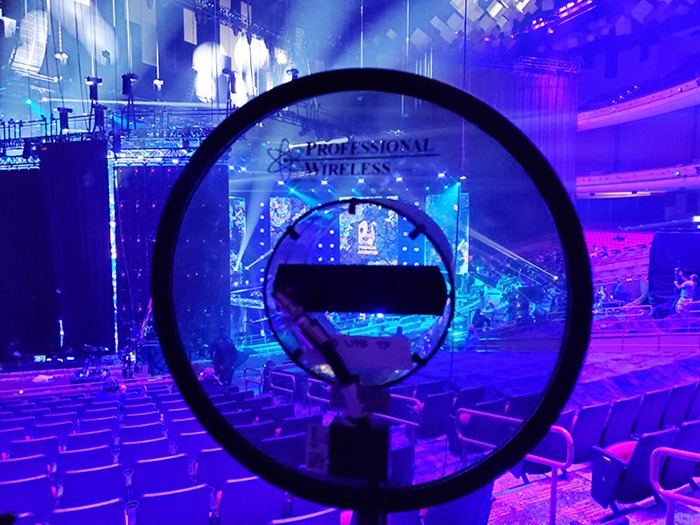Professional Wireless Systems (PWS) has added the Tour Series (TS) Helical Antenna to their antenna line. The TS Helical differs from their standard helical versions (available in both the 460-900 and 900-1000 MHz frequency ranges) because it was designed with a lower profile making it useful for applications that require compact size and easy storage for touring applications.
“The TS Helical was a product that we had kicked around for a while,” explained Jim Van Winkle, General Manager for Orlando-headquartered PWS. “Touring professionals and integrators were looking for something that was less obtrusive in size and visibility. All our helical units have circular polarization, created by a rigid helix for consistent performance, but the helix on the TS is significantly shorter—almost 7-inches – than the traditional version.”
Even with the smaller size, the new antenna offers the features that audio professionals require, with the same coverage pattern as the Domed Helical Antenna. Every PWS Helical antenna offers drop-out free RF performance for IEM, wireless mics, and intercoms along with greater bandwidth, longer range, and rock-solid reliability. The all-new smoked, transparent materials give the TS a stealth look that will blend in with staging and scenery.
“Unlike traditional whip or fin antennas – which transmit and receive signals in a single polarisation – the circular motion of the RF field emitted by a helical antenna distributes the signal through all possible polaridations,” added Justin Van Winkle, production manager for PWS. “This is key to reducing the risk of drop-outs. Any movement of a wireless device on a 1/4 wave whip antenna can result in a polarization shift that can easily cause RF dropouts.”
With any of the PWS Helical antennas, the RF energy rotates through all 360° of polarisation, providing crystal clear reception in the artist’s ears and in the wireless mics receiver no matter how they may move about or where they go on the stage. This makes the PWS Helical Antenna particularly useful in large scale events, where it may be virtually impossible to control the orientation of both the sending and receiving ends of the wireless communication.
It can be used as either a transmitting antenna or a receiving antenna – it excels in either application.


